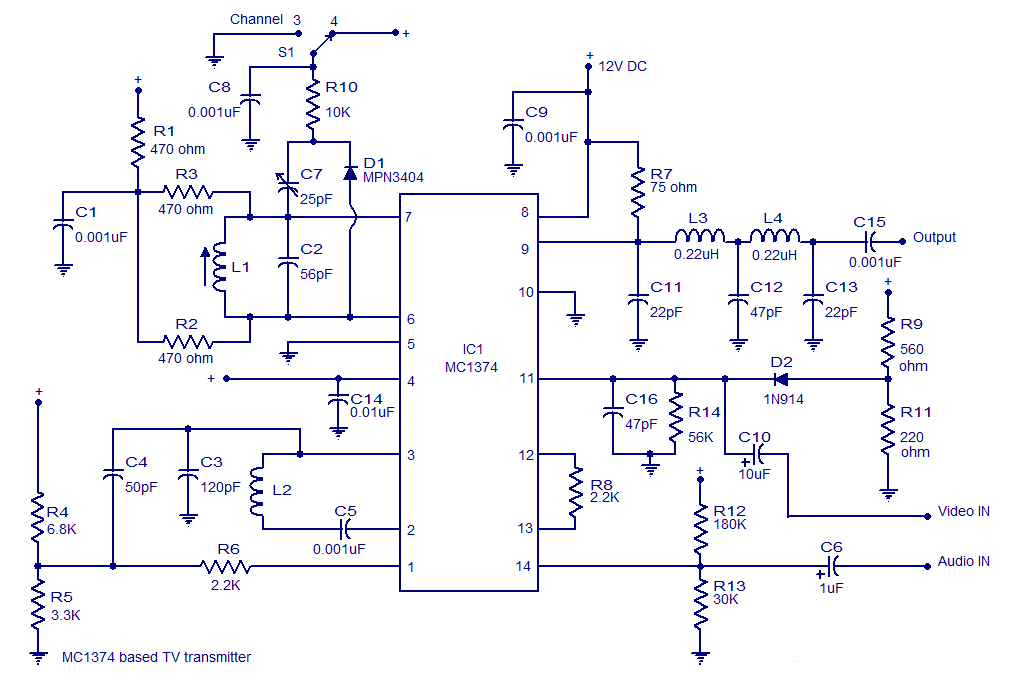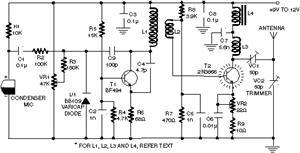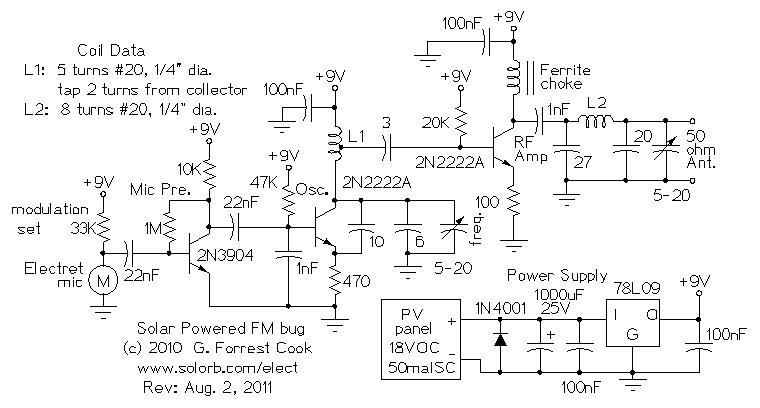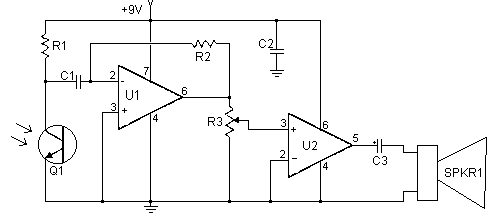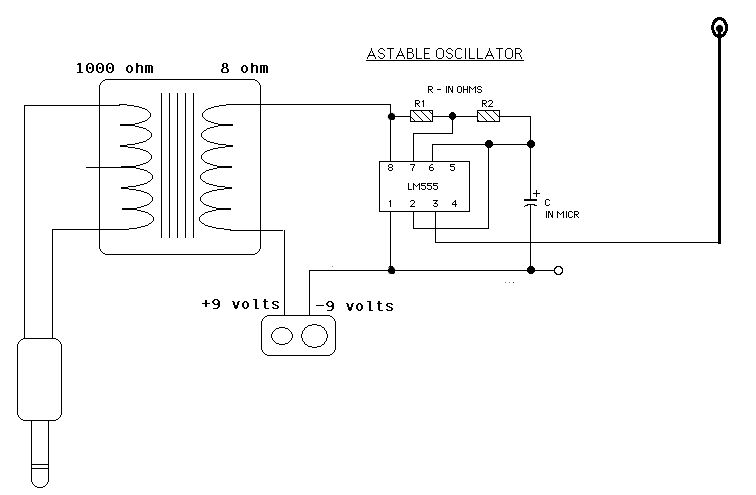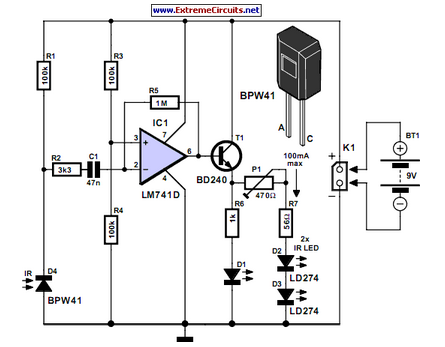
Long Range/Distance Infrared Transmitter
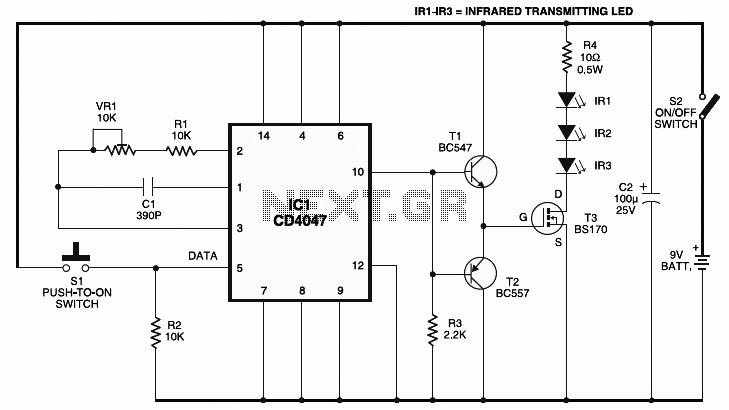
This circuit is a long-range infrared transmitter designed to enhance the power of infrared transmitters. Most infrared remotes operate effectively within a range of approximately 5 meters. The complexity of the circuit increases when designing for extended range capabilities.
The long-range infrared transmitter circuit typically consists of several key components that work together to boost the signal strength and extend the transmission distance beyond standard limits. The primary components include an infrared LED, a transistor for amplification, a resistor network for current limiting, and a power supply unit.
The infrared LED serves as the main emitter of infrared light, which is modulated to transmit information. To achieve a longer range, a high-power infrared LED may be used, which can emit a stronger signal. The transistor acts as an amplifier, increasing the current flowing through the LED, thereby enhancing its output. A careful selection of the transistor is crucial, as it must be able to handle the increased current without overheating or failing.
The resistor network is essential for controlling the current flowing through the LED and the transistor. It ensures that the components operate within their specified limits, preventing damage and ensuring reliable operation. The values of these resistors can be adjusted based on the supply voltage and the desired output power.
The power supply unit must provide sufficient voltage and current to support the high-power operation of the circuit. A regulated power supply is often recommended to maintain consistent performance, especially when the circuit is used in varying environmental conditions.
In addition to these components, the circuit may include a modulation circuit, which can be implemented using a microcontroller or a simple astable multivibrator configuration. This modulation is critical for encoding the data being transmitted, allowing the infrared receiver to decode the signal accurately.
Overall, the long-range infrared transmitter circuit is designed to provide enhanced performance for applications requiring extended transmission distances, making it suitable for various remote control applications, including home automation and industrial controls. Proper design and component selection are essential to achieving the desired range and reliability.Here the long range/distance Infrared transmitter circuit, give you extra power for your Infrared transmitter. The majority of the IR remotes do the job reliably within a range of 5 metres. The circuit complexity increases in case you desig.. 🔗 External reference
The long-range infrared transmitter circuit typically consists of several key components that work together to boost the signal strength and extend the transmission distance beyond standard limits. The primary components include an infrared LED, a transistor for amplification, a resistor network for current limiting, and a power supply unit.
The infrared LED serves as the main emitter of infrared light, which is modulated to transmit information. To achieve a longer range, a high-power infrared LED may be used, which can emit a stronger signal. The transistor acts as an amplifier, increasing the current flowing through the LED, thereby enhancing its output. A careful selection of the transistor is crucial, as it must be able to handle the increased current without overheating or failing.
The resistor network is essential for controlling the current flowing through the LED and the transistor. It ensures that the components operate within their specified limits, preventing damage and ensuring reliable operation. The values of these resistors can be adjusted based on the supply voltage and the desired output power.
The power supply unit must provide sufficient voltage and current to support the high-power operation of the circuit. A regulated power supply is often recommended to maintain consistent performance, especially when the circuit is used in varying environmental conditions.
In addition to these components, the circuit may include a modulation circuit, which can be implemented using a microcontroller or a simple astable multivibrator configuration. This modulation is critical for encoding the data being transmitted, allowing the infrared receiver to decode the signal accurately.
Overall, the long-range infrared transmitter circuit is designed to provide enhanced performance for applications requiring extended transmission distances, making it suitable for various remote control applications, including home automation and industrial controls. Proper design and component selection are essential to achieving the desired range and reliability.Here the long range/distance Infrared transmitter circuit, give you extra power for your Infrared transmitter. The majority of the IR remotes do the job reliably within a range of 5 metres. The circuit complexity increases in case you desig.. 🔗 External reference
